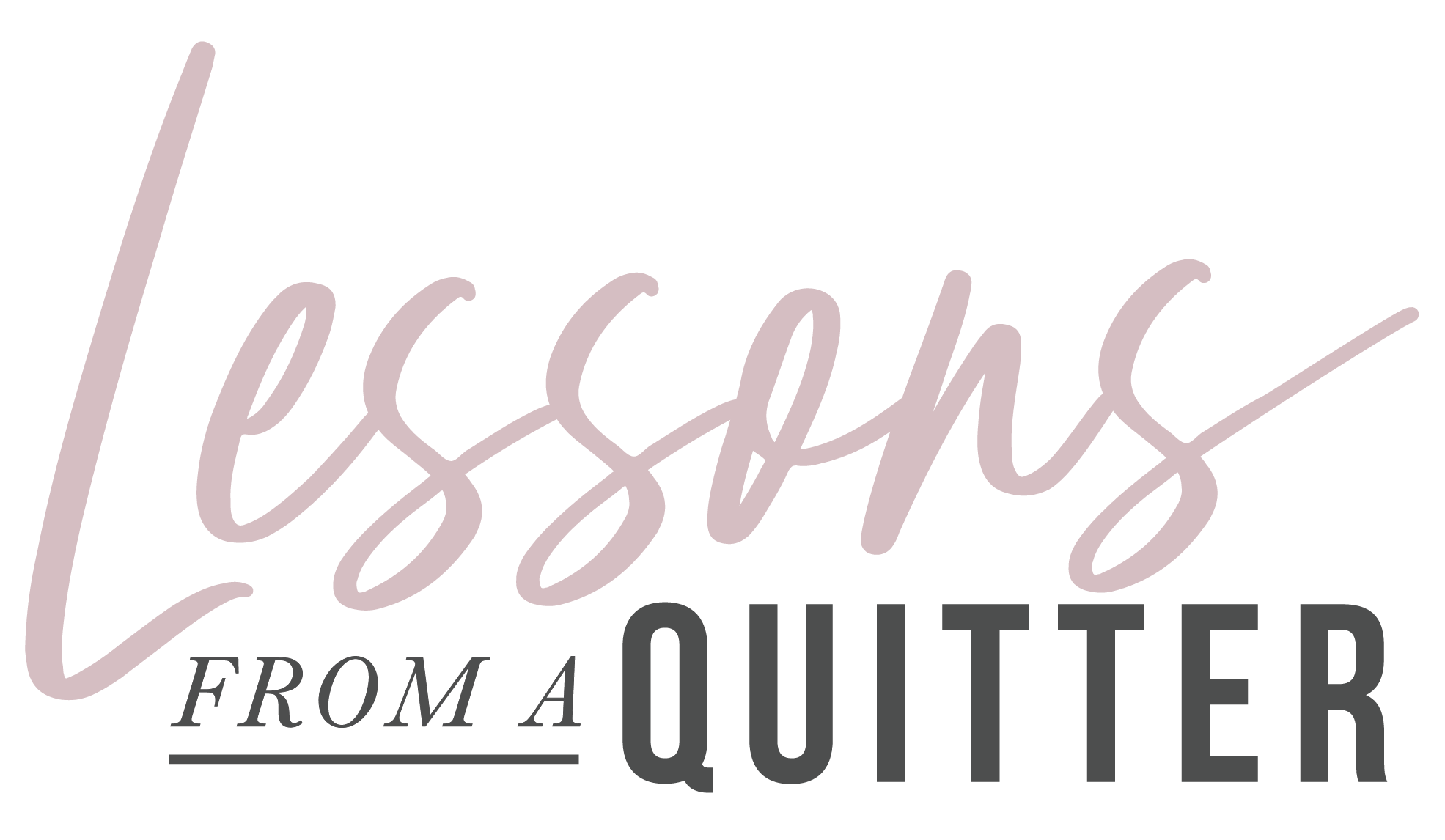Thinking about quitting your job? Is this decision to quit an impulsive one, driven by a mix of emotions and circumstances? Or maybe one you are aiming to plan for? It’s completely normal to be plagued by questions such as “Am I making the right choice?” or “What if this doesn’t work out?” once you’ve decided on quitting. To help you get clarity on what quitting will look like for you, I’ve spelled out the six steps you need to write your own Quit Plan.
Use these six steps so you don’t inadvertently overlook important aspects, leading to feelings of anxiety and uncertainty as your quit date approaches. Let’s be clear, though—a quit plan won’t eliminate the apprehension or fear associated with such a leap. The goal is not to eliminate these emotions entirely but to equip you with a strategy to manage them effectively. By systematically working through your motivations, concerns, and goals, you can empower yourself to move forward with a more level-headed approach.
A Quit Plan is your anchor in times of doubt and your roadmap to a more intentional, fulfilling career transition.
Step 1: Reflect on Your Why
If you know you want to leave your job, I want you to ask yourself “Why?” Understanding your motivation is key to understanding if leaving your job will actually bring you the happiness you are seeking or if you are going to run into the same dissatisfaction elsewhere. For a lot of us, we might know we want to leave, but we can be scared to look underneath the reasons for that. This is the time to get introspective and dig deep. Here are a few questions to ask yourself to get you started:
Why do I want to quit?
Why do I want to leave this job?
What do I want to fix by leaving this job?
Am I running away from something?
Is it because I have imposter syndrome?
Is it because I don’t feel like I’m growing anymore?
Knowing the why behind your feelings will help you realize with clarity and direction, what is driving your desire.
Step 2: Get Clear on The Numbers
Fear of financial instability is often the biggest roadblock people face when making the decision to quit. For a lot of us, we use finances as an excuse to not take a step into something that’s scary. We have so much fear around money and around looking at our money. But this is the part where we really need to have an honest look at where we are financially. Consider how much you have saved, what your expenses are, how much of a runway you have to quit working, and how much you would need to make in your next step. I want you to get really detailed about what it is you need, how much you think you need, how long that will take you, and how much you are making now.
So many people tell me they have to replace their income. I challenge you to consider, do you need your whole income to meet your expenses? If you did want to quit and make the jump into something new, could you make less for a little while? If that’s going to help you in the long-term span of what you want to do. Let’s say you want to start a business, you may not come out of the gate making as much as you want to make in your salaried position. Is that okay? Can you take a job making less, maybe go part-time in your career, maybe do consulting so that you can replace some of your salary to cover your expenses? Can you consider scenarios like downsizing or part-time work to support your transition.
Remember, knowing your numbers empowers you to make informed decisions and let go of the fear of the unknown.
Step 3: Dream Big and Explore Possibilities
This next step will serve as your north star and help you get a better understanding of what you want to do once you quit. I really want people to focus on figuring out your dreams. What do you want in this life? How do you define what is a successful life? What is your dream? Spend some time figuring out what you want for this life–not in the next job. When you have this answer you can start looking at what kind of career supports that. What are you working towards? Can you set yourself up for that? Pinpoint your dreams and goals so you can create them for yourself. You can’t know that if you don’t know your dreams and admit them to yourself.
Often, our dreams aren’t really outlandish things. What I’ve found is that people’s dreams are very doable. Maybe it’s wanting more time at home, flexibility, or to be able to breathe and stop doing so much. Or maybe it’s wanting to not worry about money. Whatever the basis of those dreams are, I want you to find things that light up your soul. You want to start thinking about what is lacking for you right now and what would that look like if I had it? The answers you find in this step will guide your decisions and shape your next career moves.
Step 4: Spotlight Your Skills
Use this step to take the time to really figure out what your skills are. What are your strengths? Where do you shine? If you’re feeling the imposter syndrome, I want you to work on being able to look at what value you bring. I promise you have tons of strengths. If you can’t come up with them, take a strengthsfinder test (there’s tons of different types of assessment tools online) to give you more of an objective look at what areas you are strong in.
It’s good to know where you thrive because one of the things we want to do is play to our strengths. Your strengths come very easily to you so you may not even realize them to be skills. We are constantly looking at what we don’t do well so we want to start shifting that. We start asking yourself, what are the things you shine at? What are the things that you are constantly getting praise for in your reviews, from your bosses, from others? What do people come to you for? The more you can look at that, the more understanding you will have of what jobs, fields, and areas you will shine in and that’s what I want you to focus on.
Step 5: Explore Your Options
When we looked at the dream life, we started figuring out what things are in the direction of what we want for ourselves. Give yourself some time to research the industries that maybe focus on the skills that you have that you’ve always been interested in. What are the fields that you are interested in right now? What are potential careers for you? Take some time to get to know those professions.
Maybe that’s through research, maybe that’s through networking. Maybe it’s reaching out to people, going to job fairs, going to workshops or meetups. The more you learn about different fields, the easier it becomes to see if your skills fit. Is this something you want to do long term? Is this something that will take you towards the direction that you want to go in? Or is this field a stepping stone because maybe you want to acquire some skills for a bigger goal? Explore your options so you can start to outline what the next steps are toward your dream life.
Step 6: Tackle Your Fears Head-On
This last step is a fear assessment. This is where you get all of your fears out on paper. You’re going to be afraid because we crave certainty and that can make changing things feel scary so we want to deal with it head on. The more you look at your fears, the easier it becomes to deal with them. The easier it becomes to manage them, the easier it becomes to recognize them as they pop up throughout our Quit Plan.
The next thing I want you to do in a fear assessment is really answer your doubts. What if you fail? What if you regret quitting? Get them all out. What are you afraid of happening? Are you afraid that you’re going to lose all my money? Or that your family is going to judge you? You want to list out your fears and then work through how you would deal with each one of these if they did happen. You want to go to the worst case scenario and start answering, what are some ways that you can overcome this? Maybe you downsize, reach out to your network, get another job.
What this does is helps us when our brains are freaking out. When you start getting a comprehensive look, you start seeing that you can course correct. For example, you might spin out on the need to make money. But you can use this step to calm yourself down with the reminder that, no, you’ve already thought through this. You have three months where you’re not going to look for another job. You’re going to try to build your business, let’s say.
When you start figuring out what it is you are worried about and how you are going to deal with it, you suddenly have all these solutions you can turn to. It’s amazing how empowered you feel when you have it all on a paper and realize that fear is actually not that big of a deal.
Your Comprehensive Quit Plan
This process isn’t rushed; it’s a deliberate journey that takes time and introspection and you will want to have this plan before you quit so that you’re not scrambling for it. Taking on this effort, piece by piece, step by step, will have you feel grounded about the decision you want to make. If you’re getting ready to quit or you’re thinking about quitting and want help with that, I want you to join me in the Quitter Club. I help you work through your Quit Plan and figure out what those fears are and what your skills are and what options you have. We can work through each part of this so that you have a comprehensive plan, and the confidence to do the things you want to do.
And when doubts inevitably arise, you can get the coaching you need so that you don’t stay stuck or give up on your plan.


